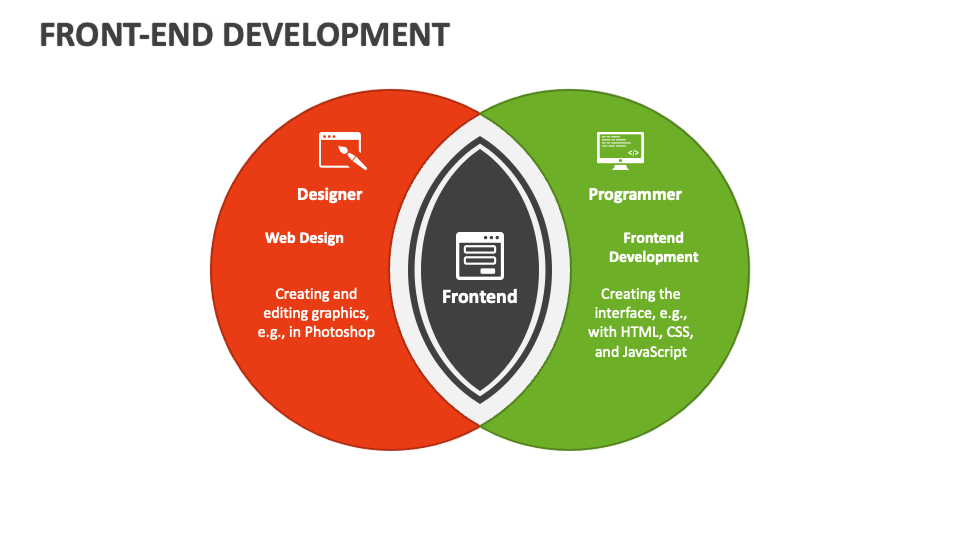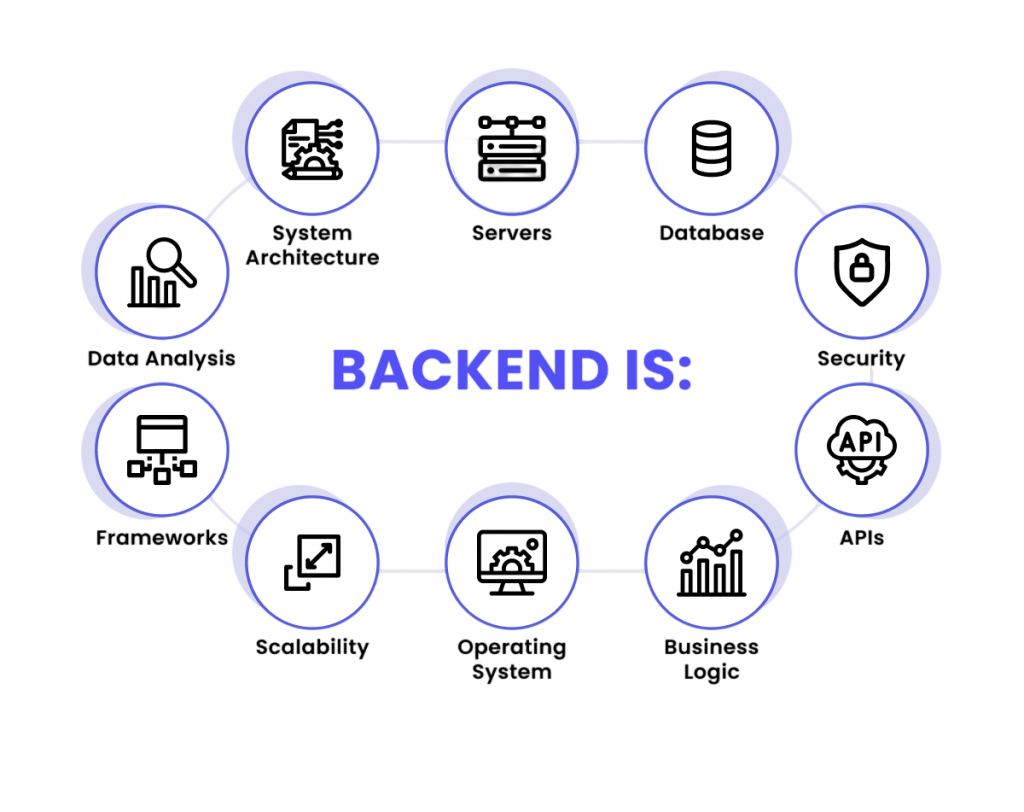
- Introduction to Web Architecture
- Definition of Frontend Development
- Definition of Backend Development
- Technologies Used in Frontend
- Technologies Used in Backend
- Data Flow Differences
- Role in User Experience
- Hosting and Deployment Differences
- Conclusion
Introduction to Web Architecture
Web architecture refers to the conceptual design and operational structure of the World Wide Web. It encompasses all the layers and technologies that enable communication between client devices and web servers. Web architecture ensures that content and services are delivered seamlessly to users through the internet. A robust web architecture allows websites and applications to scale, remain secure, perform efficiently, and offer a good user experience. Web architecture typically comprises frontend development (client-side), backend development (server-side), databases, APIs, and the communication protocols that connect them.Web architecture refers to the structural design of how websites, web applications, and online systems are built and how different components interact with each other over the internet. It defines the way data flows between users (clients), servers, and databases to deliver a smooth and secure web experience. A basic Frontend vs Backend includes elements such as the client (browser), web server, application server, Web Designing Training and database server. When a user accesses a website, their browser (client) sends a request to the server, which processes it, fetches the required data, and sends back a response usually in the form of a web page. Web architecture can vary from static websites, which serve fixed content, to dynamic and multi-tiered architectures, which involve real-time data processing and complex integrations. Understanding web architecture is essential for developers, designers, and digital marketers, as it impacts website performance, security, scalability, and user experience.
To Earn Your Web Developer Certification, Gain Insights From Leading Data Science Experts And Advance Your Career With ACTE’s Web Developer Courses Today!
Definition of Frontend Development
Frontend development refers to the creation of the part of the website or web application that users interact with directly. It involves everything that users see, touch, and experience on their browser or mobile screen. This includes layout, design, navigation, animations, buttons, text, and media. The primary focus of frontend development is to provide a seamless and engaging user experience (UX). Frontend developers use languages like HTML for content structure, CSS for styling, and JavaScript for interactivity.

They work closely with UI/UX designers to implement visually appealing and responsive interfaces. The ultimate goal is to make the interface user-friendly, useState in React fast, and responsive across all devices and screen sizes.Frontend development refers to the process of building the visual and interactive parts of a website or web application that users see and interact with directly in their browsers. It involves coding the layout, design, structure, and behavior of web pages using technologies like HTML (HyperText Markup Language) for content structure, CSS (Cascading Style Sheets) for styling, and JavaScript for interactivity and functionality. Frontend developers ensure that websites are responsive, user-friendly, and visually appealing across different devices and screen sizes. They work closely with designers and backend developers to bring user interfaces to life and ensure seamless user experiences. Modern frontend development also includes the use of frameworks and libraries such as React, Vue.js, and Angular, which help in building complex, dynamic applications more efficiently.
Definition of Backend Development
Backend development refers to the server-side logic of web applications. It is responsible for processing user requests, managing databases, implementing business logic, handling authentication, and serving the right data to the frontend. Unlike frontend development, backend processes are not visible to the end user. Backend developers work with server-side languages such as Python, Java, PHP, Node.js, and frameworks like Django, Spring Boot, and Express. They interact with databases, maintain APIs, ensure secure data storage, and manage server operations. The backend acts as the engine that powers the Web Designing Training, ensuring that it functions correctly and can handle various user interactions and loads.Backend development refers to the server-side part of web development that focuses on how a website or web application functions behind the scenes. It involves writing code that connects the frontend (what users see) to databases, servers, and other systems, ensuring that data is processed, stored, and delivered correctly. Backend developers work with server-side programming languages like Python, Java, PHP, Ruby, or Node.js, and use databases such as MySQL, MongoDB, or PostgreSQL to manage and retrieve data. Their responsibilities include building APIs (Application Programming Interfaces), handling user authentication, maintaining server performance, and ensuring data security. While users don’t directly see the backend, it plays a critical role in enabling smooth and reliable functionality for any web or mobile application.
Would You Like to Know More About Web Developer? Sign Up For Our Web Developer Courses Now!
Technologies Used in Frontend
Frontend development has evolved rapidly over the past few years with the introduction of modern tools, libraries, and frameworks. Some of the most commonly used frontend technologies include:
- HTML (HyperText Markup Language): Provides the basic structure of web pages.
- CSS (Cascading Style Sheets): Used for designing and laying out web pages.
- JavaScript: Enables dynamic and interactive features.
- Frontend Frameworks: React.js, Angular, React Lifecycle Component and Vue.js for building dynamic single-page applications.
- Preprocessors and Tools: SASS/SCSS for advanced CSS, Webpack and Babel for bundling and compiling code.
- Version Control: Git and GitHub for collaboration and code management.
- Responsive Design: Media queries, Bootstrap, and Flexbox/Grid systems to ensure compatibility with various devices.
Technologies Used in Backend
Backend technologies focus on logic, data management, and server communication. Key technologies include:
- Programming Languages: Java, Python, PHP, Ruby, JavaScript (Node.js), C#.
- Frameworks: Django (Python), Spring Boot (Java), Express (Node.js), Laravel (PHP), Java Web Development, Ruby on Rails.
- Databases: MySQL, PostgreSQL, MongoDB, Redis, Oracle Database.
- Web Servers: Apache, Nginx.
- Authentication Tools: OAuth, JWT, Passport.js.
- API Protocols: RESTful APIs, GraphQL.
- DevOps Tools: Docker, Kubernetes, Jenkins for CI/CD.
- Cloud Platforms: AWS, Azure, Google Cloud for hosting and infrastructure management.

Are You Interested in Learning More About Web Developer? Sign Up For Our Web Developer Courses Today!
Data Flow Differences
The data flow in frontend and backend development differs significantly based on their roles in a web application. In frontend development, data typically flows from the user interface (UI) to the backend through inputs, forms, and interactions. The frontend captures this data and sends it via HTTP requests (such as GET or POST) to the backend for processing. Once the backend receives the data, it performs necessary operations like validation, storage, Web Developer or fetching information from a database. In backend development, data flows internally between the server, application logic, and database. After processing the request, the backend sends a response back to the frontend, often in the form of JSON or HTML, which the frontend uses to update the user interface. While the frontend handles how data is displayed and interacted with, the backend manages how data is processed, secured, and stored. Understanding these data flow differences is essential for creating seamless and efficient web applications. Frontend is concerned with presentation and capturing user actions, while backend focuses on computation, data manipulation, and response generation.
Role in User Experience
Frontend vs backend development both play crucial roles in delivering a seamless and engaging user experience (UX) on websites and applications. The frontend is the part users see and interact with includes design, layout, buttons, navigation, and responsiveness. A clean, intuitive, and mobile-friendly interface encourages users to stay longer and engage more with the content or services offered. Fast-loading pages and smooth interactions are also essential aspects of a good frontend experience. On the other hand, the backend works behind the scenes to support what the user sees. It manages data processing, server requests, user authentication, ReactJS Tutorial and database interactions. If the backend is poorly built, users might experience slow loading times, broken features, or even system errors, which can quickly frustrate them even if the design looks appealing. In short, the frontend delivers visual and interactive appeal, while the backend ensures functionality and reliability. A successful user experience depends on both working together. If either side fails, the overall experience suffers. That’s why collaboration between frontend and backend developers is key to building modern web applications that are not only beautiful but also fast, secure, and user-friendly.
Conclusion
Frontend vs backend development are both essential parts of modern web architecture. While the frontend focuses on user interfaces and experience, the backend handles the logic, data, and functionality that power those interfaces. The two domains require distinct yet complementary skill sets, tools, Web Designing Training and technologies.Choosing a career in frontend or backend development depends on personal interest whether you enjoy crafting visual experiences or building logical systems. Regardless of the path, web development offers lucrative and intellectually rewarding opportunities. In the evolving tech landscape, the synergy between frontend and backend remains crucial to building effective, scalable, and user-friendly web applications.



